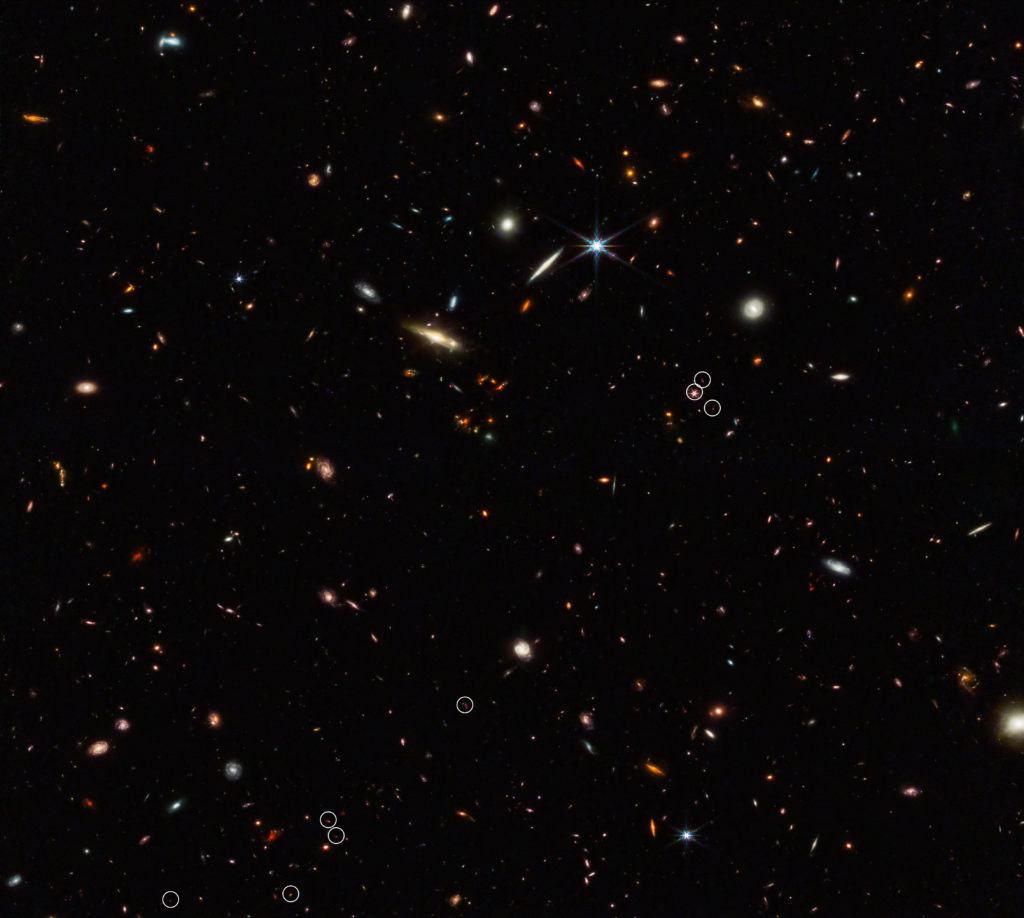Using the James Webb Space Telescope (JWST), astronomers have discovered a filamentous structure of ten galaxies that existed just 830 million years after the Big Bang. According to the researchers, over time it evolves into a galactic cluster.

Galaxies are not scattered randomly across the Universe. They gather not only in clusters, but also form huge interconnected filamentous structures with giant voids between them.
Astronomers have long been trying to find an answer to the question of how exactly the global web of the Universe is formed. It is believed that supermassive black holes played a key role in this process.
To confirm this assumption, researchers from the ASPIRE project (A SPectroscopic survey of biased halos In the Reionization Era) used the JWST telescope. During the observations, they managed to detect a filament 3 million light-years long, consisting of ten galaxies. They are “crowned” by a quasar: a galaxy with an active supermassive black hole in the center. According to astronomers’ calculations, over time this filament turned into a massive galactic cluster, similar to the well-known Coma Berenices cluster.
During the observations, JWST also measured the masses of the black holes of eight quasars that existed less than a billion years after the Big Bang. They range from 600 million to 2 billion solar. For comparison, the mass of the black hole in the center of our galaxy exceeds the mass of the Sun by only 4 million times. Astronomers continue to search for “clues” explaining how these early black holes could grow to such a size so quickly.
JWST also found evidence of how black holes affect star formation processes in their galaxies. They do this through “winds”: particle emissions produced by their jets. Although this phenomenon is known to astronomers, they have never observed it at such an early stage of the existence of the Universe.
According to https://www.nasa.gov
Follow us on Twitter to get the most interesting space news in time
https://twitter.com/ust_magazine

